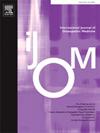Association of neurovascular events with cervical manual therapy: A cohort study
IF 1.5
4区 医学
Q2 MEDICINE, GENERAL & INTERNAL
引用次数: 0
Abstract
Background
Manual therapy is frequently used in the treatment of cervical-spine conditions. Due to the critical neurovascular structures in the cervical region, there are potential risks associated.
Methods
The PearlDiver Patient Record Database was used to evaluate a cohort of patients with cervical-spine conditions between 2007 and 2011 using International Classification of Disease codes (721.x, 722.x, 723.x, 739.1). Current Procedural Terminology codes were used to identify Manual Therapy Techniques (97140), Osteopathic Manipulation (98925–98927), and Chiropractic Manipulation (98940–98942). Medical encounters for Vertebral-Basilar Artery Syndrome or Transient Ischemic Attack (ICD-9435.x), Carotid or Vertebral Artery Dissection (ICD-9443.21 & 443.24), Cerebral Artery Thrombosis or Embolus (ICD-9434.x), or Arterial Occlusion with or without Cerebral Infarct (ICD-9433.x) were assessed the same day, 14-days, 30-days, and 90-days following treatment exposure. For each event, prevalence ratios (PR) and 95 % confidence intervals (CI) were calculated comparing those receiving manual therapy to those not.
Results
4,781,968 unique patients (15.9 %) were diagnosed with a cervical-spine condition, with 2,477,117 (51.8 %) of these patients provided MT from 2007 to 2011. Patients provided MT had an 11 % increased prevalence of arterial occlusion observed within 90-days post-intervention (PR: 1.11 95 % CI 1.02–1.21, NNT Harm: 27,762) and a 11–45 % lower prevalence of being diagnosed with a neurovascular complication 30-days (PR: 0.89, 95 % CI 0.84–0.95), 14-days (PR = 0.82, 95 % CI 0.76–0.88), and the same day (PR: 0.55, 95 % CI 0.52–0.59) following treatment compared to patients not treated with MT.
Conclusion
This study presents population-level statistics on the occurrence of neurovascular complication after MT for cervical-spine conditions.
Level of evidence
Treatment, level 2a.
神经血管事件与颈椎推拿治疗的关联:一项队列研究
背景:手工疗法常用于治疗颈椎疾病。由于关键的神经血管结构在颈椎区域,有潜在的风险相关。方法采用PearlDiver患者记录数据库,使用国际疾病分类代码(International Classification of Disease codes, 721)对2007年至2011年间的一组颈椎疾病患者进行评估。x, 722。x, 723。x 739.1)。使用现行程序术语代码来识别手工治疗技术(97140)、整骨疗法(98925-98927)和捏脊疗法(98940-98942)。椎-基底动脉综合征或短暂性脑缺血发作的医学遭遇(ICD-9435)。x),颈动脉或椎动脉夹层(ICD-9443.21和443.24),脑动脉血栓形成或栓子(ICD-9434)。x),或动脉闭塞伴或不伴脑梗死(ICD-9433.x)在治疗暴露后的当天、14天、30天和90天进行评估。对于每个事件,计算接受手工治疗的患者与未接受手工治疗的患者的患病率比(PR)和95%置信区间(CI)。结果2007 - 2011年有4,781,968例特殊患者(15.9%)被诊断为颈椎疾病,其中2,477,117例(51.8%)患者接受了MT治疗。接受MT治疗的患者在干预后90天内观察到的动脉闭塞患病率增加了11% (PR: 1.11 95% CI 1.02-1.21, NNT危害:27,762),30天(PR: 0.89, 95% CI 0.84-0.95), 14天(PR = 0.82, 95% CI 0.76-0.88)和同一天(PR: 0.76-0.88)被诊断为神经血管并发症的患病率降低了11 - 45%。0.55, 95% CI 0.52-0.59)。结论本研究对颈椎疾病行MT后神经血管并发症的发生率进行了人群水平的统计。证据水平:治疗,2a级。
本文章由计算机程序翻译,如有差异,请以英文原文为准。
求助全文
约1分钟内获得全文
求助全文
来源期刊
CiteScore
2.20
自引率
36.80%
发文量
42
审稿时长
3 months
期刊介绍:
The International Journal of Osteopathic Medicine is a peer-reviewed journal that provides for the publication of high quality research articles and review papers that are as broad as the many disciplines that influence and underpin the principles and practice of osteopathic medicine. Particular emphasis is given to basic science research, clinical epidemiology and health social science in relation to osteopathy and neuromusculoskeletal medicine.
The Editorial Board encourages submission of articles based on both quantitative and qualitative research designs. The Editorial Board also aims to provide a forum for discourse and debate on any aspect of osteopathy and neuromusculoskeletal medicine with the aim of critically evaluating existing practices in regard to the diagnosis, treatment and management of patients with neuromusculoskeletal disorders and somatic dysfunction. All manuscripts submitted to the IJOM are subject to a blinded review process. The categories currently available for publication include reports of original research, review papers, commentaries and articles related to clinical practice, including case reports. Further details can be found in the IJOM Instructions for Authors. Manuscripts are accepted for publication with the understanding that no substantial part has been, or will be published elsewhere.

 求助内容:
求助内容: 应助结果提醒方式:
应助结果提醒方式:


